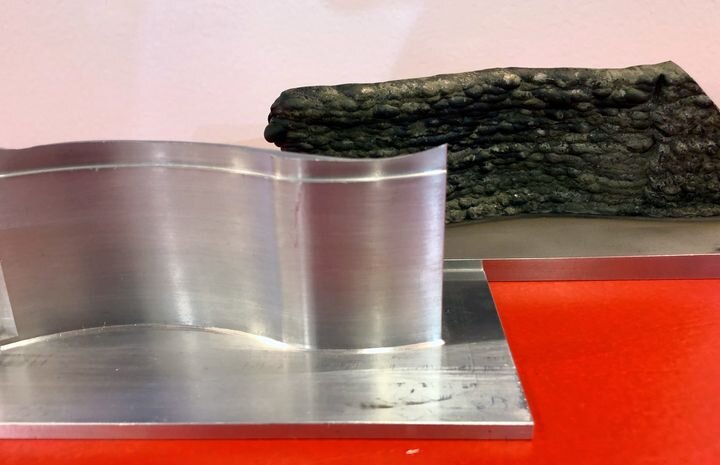![Toolhead from SBI International’s M3D-P metal 3D printing system [Source: Fabbaloo]](https://fabbaloo.com/wp-content/uploads/2020/05/sbi-toolhead-1_img_5eb08c3361bb9.jpg)
We had a look at an Austrian company offering a new metal 3D printing option.
SBI International has been around since 2001, specializing in plasma spot welding, but since 2016 has been working on a method for metal 3D printing.
The process used on their M3D-P systems is a form of wire arc manufacturing (WAM), in which a wire is pushed through a hot plasma arc and deposited on the build platform. The cartesian-style motion system moves the tool head around appropriately to gradually build up an object.
The material used by SBI International’s process can be either wire feedstock or fine metal powder. They say it can 3D print aluminum, steel, nickel alloys, copper, titanium metals and more, and at a surprisingly high rate of as high as 10kg/hour.
![Rough initial 3D print from SBI International’s M3D-P metal 3D printing system [Source: Fabbaloo]](https://fabbaloo.com/wp-content/uploads/2020/05/image-asset_img_5eb08c33bcd85.jpg)
The deposition process results in a rather coarse interim object, although that is the price to obtain the fast deposition rate. However, the completed 3D prints can then be CNC milled to a smooth surface, producing parts that are essentially identical to fully CNC-milled items, but with far less material waste.
![Comparison of initial and final CNC-milled metal prints from SBI International’s M3D-P metal 3D printing system [Source: Fabbaloo]](https://fabbaloo.com/wp-content/uploads/2020/05/image-asset_img_5eb08c340ff92.jpg)
We’re told the M3D-P includes an airtight chamber that can be purged if the material being 3D printed requires it.
While we saw an M3D-P with a cartesian motion system, the company tells us they can also offer their toolhead on a robotic arm system for more complex builds. They can also build the M3D-P to custom build volumes as requested by customers.
The M3D-P is a closed loop system that should ensure very good quality results.
![Metal 3D print involving multiple metals from SBI International’s M3D-P metal 3D printing system [Source: Fabbaloo]](https://fabbaloo.com/wp-content/uploads/2020/05/image-asset_img_5eb08c344fce4.jpg)
It’s also possible to mix materials within a 3D print job by simply changing the input material part-way through the job. Here you can see a detailed view of a finished 3D print that has taken this route, as well as being CNC milled to a smooth surface.
You can see how their system works here:
The process used by SBI International in the M3D-P is very quick, with reasonably large metal 3D prints being produced in only a matter of hours, there are some constraints on the final geometry. Due to the need to CNC mill the prints, by definition the parts must be those accessible by CNC equipment. You won’t be making “impossible” metal parts on the M3D-P.
But you will be making many custom parts quickly and with little waste metal. And that could be an important cost saving for many organizations.

